list of authors
About Author

An Introduction to Islam
An Introduction to the Pillars of Islaam, Eemaan, and Ihsaan for Non-Muslims

Categories of Tawheed
What is the meaning of Tawheed and what are its categories.

Duties of Muslims
Focuses on the duties of a Muslim towards Allah. the society, and himself.

Imaan (Belief)
Blessings of faith is the greatest blessings of Allah, Defining faith as mentioned in the hadith mentioning that faith isn’t just uttering but also deeds and that it increases by obedience and decreases by disobedience then mentioned the parts of faith.

The challenge of the Quran
The Qur’anic challenge to produce a work similar to it, and the inability of its contemporaries to meet it.

The purpose of creation
An introduction to the most puzzling question of human history, and a discussion about the sources which can be used to find the answer.
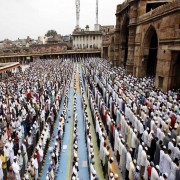
The religion of Islam
A brief article which describes the religion of Islam, the meaning of Islam, the message of Islam, recognition of Allah, and the Universality of Islam, by Dr Bilal Philips.

The search for inner peace
From the earliest sources of history, the struggle for global search of inner peace has been something mankind has tried to achieve. In this article the writer present an informative topic on the problems of the societies that we live in with a special look at the western way of life, which the rest of the world has started to adopt- But is this imitation a search for inner peace or the path to inner destruction?
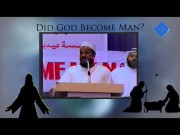
Did God Become Man?
In this sort lecture Dr Bilal Philips talks about Did God become part of His creation, did His creation become part of Allah. A great lectures beneficial for giving da’wah to many different religions.

How I came to Islam From Darkness To Light
In this episode Dr Bilal Philips talks in detail on a very important topic of ‘How I Came to Islam from Darkness to Light’, Hear the exciting story of how he came to Islam in this great lecture.
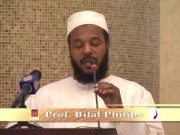
Is there a True Religion?
Dr Bilal Philips presents a very important lecture on the topic of “Is there a True Religion?” in which he describes the importance of Believing in One God, compared different religions because all religions claim that they alone are correct and the rest are false, then how will the seeker of true religion identify? Is there a True Religion?
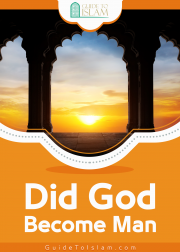
Did God Become Man
Did God Become Man: The main purpose for writing this booklet is to reach those who believe in God and cause them to reflect on the nature of their beliefs in the light of reason and revelation. The booklet is actually the edited version of a lecture, which I have delivered on many occasions and in many locations around the world. The positive response of the varied audiences to this lecture encouraged me to prepare it as a booklet in order to make it accessible to a wider audience.

Bilal the Abyssinian – One Light, Many Colors
This book, Bilal ibn Rabah: Islam's Attitude to Racial Discrimination, outlines the history of Bilal ibn Rabah, a former slave from Abyssinia who became a companion of the Prophet.

test from omm
Just just just just think about the world 1400 years ago and the level of knowledge that existed, or perhaps we should say the level ignorance that was prevalent, especially in regards to the natural world. Of course some thinkers and philosophers had made some amazing discoveries, even estimating the circumference of the earth, but they also got a lot of things very wrong. Legends and myths also abounded. Reading the Quran, you find a distinct lack of such legends and myths about the creation of the universe and the natural world. Yes, there are miracles and wonders worked by the Creator to increase the faith of the faithful and confound the obstinate, but otherwise descriptions of the world and universe seem remarkably modern. You would expect the Quran to reflect the myths and legends of the time. Even if Mohammed had managed to pick up the best ideas of the time and leave out these legends, it still does not account for the remarkable consistency of the Quran with modern science. Here are a couple of verses in the Quran dealing with the universe and its creation. “Do not the Unbelievers see that the heavens and the earth were joined together (as one unit of creation), before We clove them asunder, and We made from water every living thing. Will they not then believe?” [The Quran; Chapter 21 – The Prophets, verse 30} Ever heard of the Big Bang and how the universe started as a singularity, a super-condensed ball of matter and energy? We talked about that in the beginning, remember? It sure seems that the information in the Quran is correct about something that we discovered just about seventy years ago. Then how about this: “And it is We who have constructed the heaven with might, and verily, it is We who are steadily expanding it.” [The Quran; Chapter 51 – The Winds That Scatter, verse 47] When Einstein was conjuring up his theories, the consensus among scientists was that the universe was static and had been like that forever, but new observations made it clear that this was not the case and that in fact galaxies were moving away from each other at a constant rate. In other words, the universe is expanding. More than strange is how these things came to be found in a book 1400 years old. Science is a very fickle fellow. Things which scientists all agree upon at one time are turned on their heads and are shown to be contradicted by observations at another time, so perhaps it’s not the best thing to judge a book by. Still, there are some things that seem to have been observed so often and so much that it becomes some sort of ‘fact’. One of these things is the embryonic development of humans. The idea that we go through stages of foetal development is really quite new. Lots of theories abounded in antiquity and early modern times that today seem to sound a bit silly. For example, one of the dominant theories that was prevalent in the eighteenth century was the pre-formation theory. This was the idea that animals existed pre-formed in the sperm. There were even claims of observations of this through the primitive microscopes available at the time. So much for seeing is believing! Aristotle thought that menstrual blood congealed with the aid of semen to form a foetus. It was not until the late nineteenth century that what we know today began to be clearly articulated. Yet over 1400 years ago the Quran stated: “Man We did fashion from a quintessence of clay. Then We placed him as (a drop of) fluid in a place of rest firmly fixed. Then We fashioned the fluid into a leech-like thing that clings (the word “alaq” is sometimes incorrectly translated as a blood-clot). Then We fashioned that leech-like thing that clings into a chewed-like lump. Then We fashioned the chewed-like lump into bones and We clothed the bones with flesh. Then We developed out of it another creature. So hallowed be Allah, the Best of Artisans”; [The Quran; Chapter 96 – The Clot, verses 1-2]: “…who fashioned man from a leech-like thing that clings”; and [The Quran; Chapter 22 – The Pilgrimage, verse 5]: “We fashioned you out of dust, then out of a drop of fluid, then out of a leech-like thing that clings, then out of a morsel of flesh – partly formed and partly unformed…” Keith Moore, Professor and Chairman, Department of Anatomy, University of Toronto, Canada, and author of ‘The Developing Human’, and considered one of the world’s leading embryologists, said concerning these statements in the Qur’an and authenticated hadeeth: “Until the 19th Century, nothing was known about classifying the stages of human development. A system of staging human embryos was developed around the end of the 19th Century based on alphabetical symbols. During the 20th century, numerals were used to describe 23 stages of embryonic development. This system of numbering the stages is not easy to follow and a better system would be based on the morphological changes. In recent years, the study of the Qur’an has revealed another basis for the classification of the stages of the developing embryo which is based on easily understood actions and changes in shape. It utilizes terms which were sent from God to Muhammed the Prophet by the Angel Gabriel and recorded on the Qur’an … It is clear to me that these statements must have come to Muhammad from God because almost all of this knowledge was not discovered until many centuries later. This proves to me that Muhammed must have been a Messenger of God.” Marshall Jonson, Professor and Chairman, Department of Anatomy, Director of the Daniel Baugh Institute, Thomas Jefferson University, Philadelphia, U.S.A., said: “As a scientist I can only deal with things I can specifically see. I can understand embryology and developmental biology; I can understand the words that are translated to me from the Qur’an. If I were to transpose myself into that era, knowing what I do today and describing things, I could not describe the things that were described. I see no evidence to refute the concept that this individual Muhammed had to be developing this information from some place, so I see nothing in conflict with the concept that Divine Intervention was involved on what he was able to say.”

test from omm
Just just just just think about the world 1400 years ago and the level of knowledge that existed, or perhaps we should say the level ignorance that was prevalent, especially in regards to the natural world. Of course some thinkers and philosophers had made some amazing discoveries, even estimating the circumference of the earth, but they also got a lot of things very wrong. Legends and myths also abounded. Reading the Quran, you find a distinct lack of such legends and myths about the creation of the universe and the natural world. Yes, there are miracles and wonders worked by the Creator to increase the faith of the faithful and confound the obstinate, but otherwise descriptions of the world and universe seem remarkably modern. You would expect the Quran to reflect the myths and legends of the time. Even if Mohammed had managed to pick up the best ideas of the time and leave out these legends, it still does not account for the remarkable consistency of the Quran with modern science. Here are a couple of verses in the Quran dealing with the universe and its creation. “Do not the Unbelievers see that the heavens and the earth were joined together (as one unit of creation), before We clove them asunder, and We made from water every living thing. Will they not then believe?” [The Quran; Chapter 21 – The Prophets, verse 30} Ever heard of the Big Bang and how the universe started as a singularity, a super-condensed ball of matter and energy? We talked about that in the beginning, remember? It sure seems that the information in the Quran is correct about something that we discovered just about seventy years ago. Then how about this: “And it is We who have constructed the heaven with might, and verily, it is We who are steadily expanding it.” [The Quran; Chapter 51 – The Winds That Scatter, verse 47] When Einstein was conjuring up his theories, the consensus among scientists was that the universe was static and had been like that forever, but new observations made it clear that this was not the case and that in fact galaxies were moving away from each other at a constant rate. In other words, the universe is expanding. More than strange is how these things came to be found in a book 1400 years old. Science is a very fickle fellow. Things which scientists all agree upon at one time are turned on their heads and are shown to be contradicted by observations at another time, so perhaps it’s not the best thing to judge a book by. Still, there are some things that seem to have been observed so often and so much that it becomes some sort of ‘fact’. One of these things is the embryonic development of humans. The idea that we go through stages of foetal development is really quite new. Lots of theories abounded in antiquity and early modern times that today seem to sound a bit silly. For example, one of the dominant theories that was prevalent in the eighteenth century was the pre-formation theory. This was the idea that animals existed pre-formed in the sperm. There were even claims of observations of this through the primitive microscopes available at the time. So much for seeing is believing! Aristotle thought that menstrual blood congealed with the aid of semen to form a foetus. It was not until the late nineteenth century that what we know today began to be clearly articulated. Yet over 1400 years ago the Quran stated: “Man We did fashion from a quintessence of clay. Then We placed him as (a drop of) fluid in a place of rest firmly fixed. Then We fashioned the fluid into a leech-like thing that clings (the word “alaq” is sometimes incorrectly translated as a blood-clot). Then We fashioned that leech-like thing that clings into a chewed-like lump. Then We fashioned the chewed-like lump into bones and We clothed the bones with flesh. Then We developed out of it another creature. So hallowed be Allah, the Best of Artisans”; [The Quran; Chapter 96 – The Clot, verses 1-2]: “…who fashioned man from a leech-like thing that clings”; and [The Quran; Chapter 22 – The Pilgrimage, verse 5]: “We fashioned you out of dust, then out of a drop of fluid, then out of a leech-like thing that clings, then out of a morsel of flesh – partly formed and partly unformed…” Keith Moore, Professor and Chairman, Department of Anatomy, University of Toronto, Canada, and author of ‘The Developing Human’, and considered one of the world’s leading embryologists, said concerning these statements in the Qur’an and authenticated hadeeth: “Until the 19th Century, nothing was known about classifying the stages of human development. A system of staging human embryos was developed around the end of the 19th Century based on alphabetical symbols. During the 20th century, numerals were used to describe 23 stages of embryonic development. This system of numbering the stages is not easy to follow and a better system would be based on the morphological changes. In recent years, the study of the Qur’an has revealed another basis for the classification of the stages of the developing embryo which is based on easily understood actions and changes in shape. It utilizes terms which were sent from God to Muhammed the Prophet by the Angel Gabriel and recorded on the Qur’an … It is clear to me that these statements must have come to Muhammad from God because almost all of this knowledge was not discovered until many centuries later. This proves to me that Muhammed must have been a Messenger of God.” Marshall Jonson, Professor and Chairman, Department of Anatomy, Director of the Daniel Baugh Institute, Thomas Jefferson University, Philadelphia, U.S.A., said: “As a scientist I can only deal with things I can specifically see. I can understand embryology and developmental biology; I can understand the words that are translated to me from the Qur’an. If I were to transpose myself into that era, knowing what I do today and describing things, I could not describe the things that were described. I see no evidence to refute the concept that this individual Muhammed had to be developing this information from some place, so I see nothing in conflict with the concept that Divine Intervention was involved on what he was able to say.”
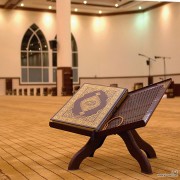
Why Islam?
From a Muslim convert to all seekers of truth.

item with all types
test from mobile description

item with all types
test from mobile description

item with all types
test from mobile description

item with all types
test from mobile description

NEW26/8
DESCRIPTION NEW26/8DESCRIPTION NEW26/8DESCRIPTION NEW26/8DESCRIPTION NEW26/8DESCRIPTION NEW26/8DESCRIPTION NEW26/8DESCRIPTION NEW26/8DESCRIPTION NEW26/8DESCRIPTION NEW26/8DESCRIPTION NEW26/8DESCRIPTION NEW26/8DESCRIPTION NEW26/8DESCRIPTION NEW26/8DESCRIPTION NEW26/8DESCRIPTION NEW26/8DESCRIPTION NEW26/8DESCRIPTION NEW26/8DESCRIPTION NEW26/8DESCRIPTION NEW26/8DESCRIPTION NEW26/8DESCRIPTION NEW26/8DESCRIPTION NEW26/8DESCRIPTION NEW26/8DESCRIPTION NEW26/8DESCRIPTION NEW26/8DESCRIPTION NEW26/8DESCRIPTION NEW26/8DESCRIPTION NEW26/8DESCRIPTION NEW26/8

NEW2-26/8
GFGFDGDF GFDGFG

